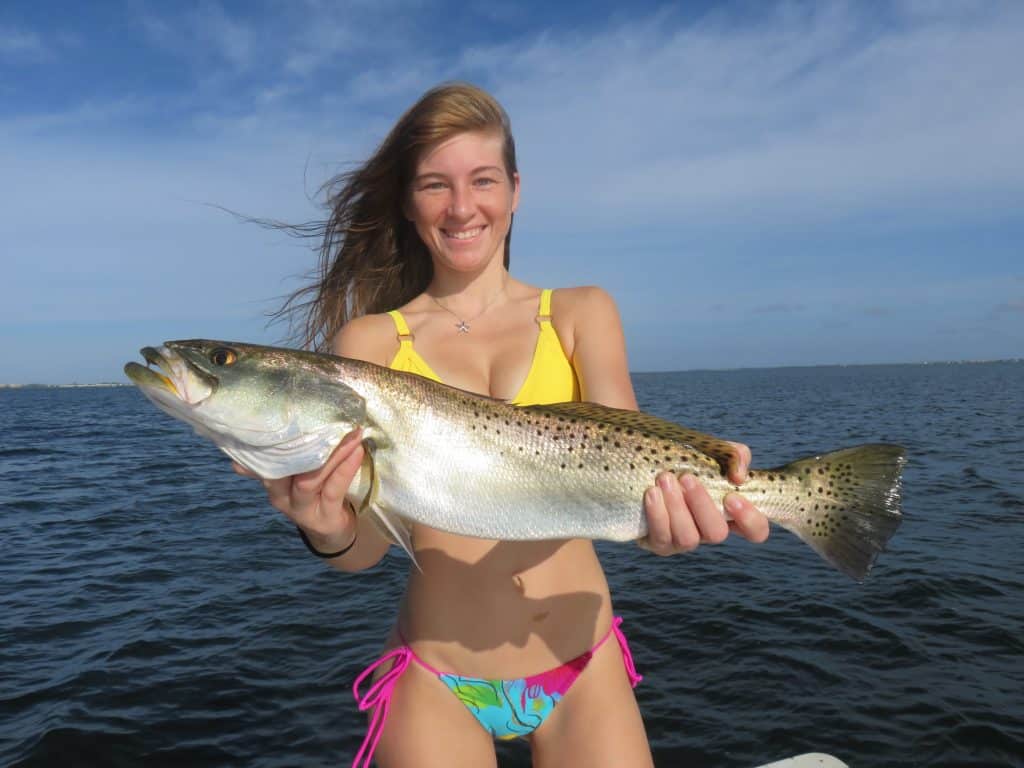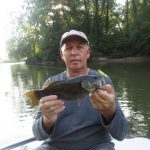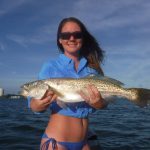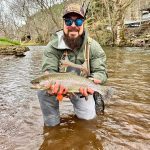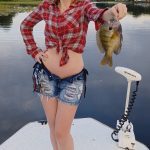Saltwater Fishing with shrimp – Pro Tips
This article will thoroughly cover saltwater fishing with shrimp. Shrimp are the most popular saltwater fishing bait all along the entire coast of the Gulf of Mexico, around Florida, and up the East Coast to the mid Atlantic. They are a versatile and very productive bait that anglers use to catch just about every saltwater species.

There are several reasons why shrimp are such a productive saltwater fishing bait. Shrimp are widely distributed throughout the inshore saltwater areas along both coasts. Shrimp are relatively easy to catch and are very high in protein. Live shrimp appeal to just about every inshore saltwater species. Finally, shrimp are readily available at just about every saltwater bait shop.
Saltwater fishing with shrimp – the top live and frozen bait!
Shrimp are crustaceans. They are widespread and abundant. Shrimp move forward slowly as they search for food. When frightened, they will try to escape by flicking their tail and quickly darting backwards. This behavior is actually similar to freshwater crayfish. Many artificial lures are designed to mimic this fleeing action.

Capt. Jim Klopfer has been running fishing charters in Sarasota, Florida since 1991. While he certainly enjoys casting artificial lures and fly fishing, many of his trips involve fishing with live shrimp. This is especially true in the winter when bottom fishing as well as when children and other novice anglers are part of the crew. Frozen shrimp are used primarily for bottom fishing.
Keeping shrimp alive
As far as live baits for saltwater fishing are concerned, shrimp are fairly easy to keep alive. This is especially true in the cooler months when the water has more oxygen and it. On chilly days, shrimp can be kept alive for several hours in a bucket or cooler of water. In warmer months, some type of aerator must be used. Anglers with fishing boats almost always have good live wells. Anglers fishing from shore will do well with a portable, battery operated aerator.

Fresh dead shrimp can be used effectively as well. In this condition, shrimp still put out a lot of fresh scent into the water to attract game fish. Anglers can even keep them alive on ice for a few hours.
Best hooks for fishing with shrimp
Hook selection can be quite confusing, especially for the novice angler. Hook sizes use an odd system. Starting at #1, the higher the number, the smaller the hook, going in even numbers. However, as they get larger, the hook sizes are listed as #1/0, pronounced “one ought”. Confused?
Read more about the best live baits for saltwater fishing in Florida
There are also several styles of hooks. Live bait hooks often have a short shank and can be light wire or very stout. Circle hooks have become quite popular and are ever required by law in some areas as they reduce the chances of a fish being hooked deep. Long shank hooks come in handy when fishing for mackerel and other species with teeth.

To keep it simple, anglers can get away with just a few hooks. Capt Jim uses a #1/0 short shank old school O’ Shaughnessy hook. It works fine for most of his saltwater fishing with live shrimp. He uses a 3/0 light wire circle hook for straight bottom fishing. Finally, he uses a #1/0 long shank hook when mackerel and bluefish are around. These 3 hooks will cover just about every situation than an angler fishing with live shrimp will encounter.
Techniques for hooking and fishing live shrimp
There are several different ways that anglers can hook a live shrimp. Capt. Jim hooks his live shrimp through the head under the horn the majority of the time. Most game fish take their prey headfirst, and shrimp are no exception. Hooking the shrimp in the head like this allows it to move freely and the water. The shrimp will kick with its tail when fish are present. This behavior will often trigger a strike. It is important to miss the “black spot”, that is the shrimp’s brain.

Hooking the shrimp in the head is definitely the preferred method when free lining a shrimp. This is simply allowing the shrimp to swim about with little or no weight. If needed, a split shot or two can be added. This is a very natural presentation that works well around docks, shorelines, and other structure in shallow water. It also works well when drifting deeper grass flats between 5 feet deep and 10 feet deep.

Many anglers fish a live shrimp under a popping cork. A popping cork is a float that has a concave surface which produces a loud popping sound when twitched sharply. Some models have rattles as well. The commotion attracts spotted sea trout, redfish, and other species, which then see the helpless shrimp dangling there. Capt. Jim likes to hook a live shrimp through the head when fishing it under a popping cork.

Hooking the shrimp through the head works well when bottom fishing for game fish. When fishing for some bottom fish, there is another method which works better. However, for larger species such as red fish, flounder, striped bass, bluefish, grouper, snapper and trout, this method works fine.
Tail hooking a live shrimp
Capt Jim will occasionally hook a live shrimp through the tail. This is mostly done when fishing structure where it is better if the shrimp does not do a lot of moving about. Seawalls, docks, piers, bridges, and other structure are spots where tail hooking a shrimp can be effective. This is especially true in fairly deep water where a little weight is required.

Tail hooking a shrimp can be very effective in quite shallow water as well. In the cooler months, fish will gang up into shallow depressions in the flats, called potholes. Game fish will be reluctant to chase a bait very far in this cooler water when their metabolism is low. Pinching the tail off and hooking the shrimp up through the bottom works very well when casting into these potholes. The shrimp will not be able to move much and fresh scent will emit from its body where the tail was removed.

Threading a shrimp on a hook is effective with fresh and frozen shrimp
There are times when it is best to thread the shrimp on the hook. In most cases, it is the best way to hook frozen shrimp. This is most often done when bottom fishing, either from a boat or when surf fishing. Hooking a shrimp in this manner has several benefits. The hook can be completely hidden. This can be important when fishing for finicky fish such as snapper, sheepshead, and tautog in clear water.

Threading a shrimp on the hook will also result in the bait being unable to move. This can be a benefit when they are holding very close to structure and it is important that the shrimp is not able to swim away. Also, hooking the shrimp in this manner results in body fluids losing out into the water, spreading the sent and attracting game fish. Finally, the hookup ratio can be better when threading the shrimp on the hook as the game fish cannot bite the back half of the shrimp off as can happen when hooking it through the head.

Anglers surf fishing almost always thread the shrimp on the hook. Long casts are often required in hooking the shrimp in this manner will help ensure that it stays on the hook during the cast. Also, bottom fish can nibble at the shrimp and threading it on the hook helps it stay on the hook longer. It is certainly the best method to use when fishing with frozen shrimp.
Hooking a live shrimp on a jig head

Live shrimp can be presented on a jig head as well. This is a very effective method when working deeper cover such as bridge pilings and docks. It can also be used when fishing deeper holes as well. The jig head combines both the hook and the weight all in one tidy little unit, making it a very easy and effective way to fish. Hooking a shrimp in this manner will cause it to “walk” along as the jig is slowly bounced off the bottom.
Tipping a jig with live shrimp

Tipping a jig consists of putting a small piece of shrimp onto the tip of a hook when fishing either a buck tail jig or a jig with a soft plastic grub. This is an excellent technique that combines the best of both worlds; live bait with and artificial lure. The sense of the shrimp will help attract fish and once it takes the lure, the taste will help it hold on to the bait just a little bit longer. It is important to use a very small piece of shrimp, about the size of a pea. Too large a piece of shrimp will destroy the action of the jig.
In conclusion, this article on saltwater fishing with shrimp will help anglers catch more fish!
